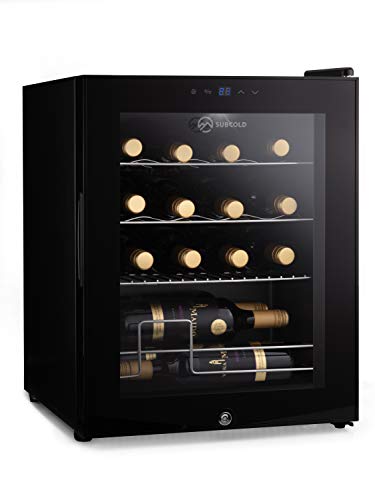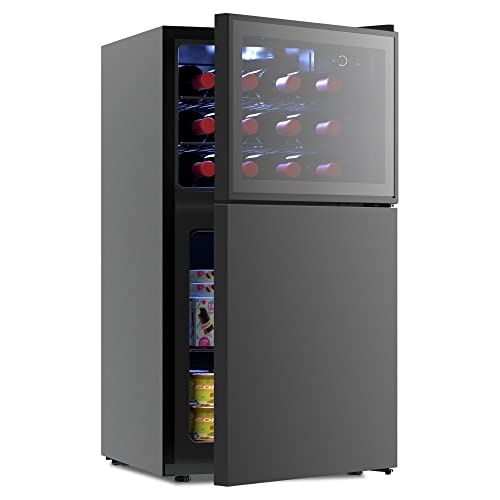You'll Never Guess This Wine Refrigerator Built In's Tricks
페이지 정보
작성자 Nathaniel 작성일24-08-14 03:07 조회13회 댓글0건본문
 Energy Efficient Wine Storage With a Wine Refrigerator Built in
Energy Efficient Wine Storage With a Wine Refrigerator Built inThis efficient built-in wine refrigerator allows you to store and serve your wine at the ideal temperature. Dual temperature control zones let you store white and red wines separately, preserving their full flavors.
Meticulously crafted to blend seamlessly into your cabinetry, these units could be placed beneath countertops for convenient access to a refreshing glass of Riesling after dinner. They require adequate ventilation and clearance in order to disperse the heat.
Size and Capacity
Built-in wine fridges are stylish and sleek alternatives to freestanding, bulky units. With front vents they can be hidden into cabinetry or underneath counters to create a seamless appearance. These wine coolers are more adaptable, allowing the storage of cold beverages and wine.
With capacities that can reach 368 bottles The wine refrigerators are made for serious collectors who have large collections. These units are designed to ensure the safety of your wine for a long time by providing ample storage space and precise climate control. These units are great for garages, basements, or other areas that aren't conditioned and where a more robust storage environment is needed.
The cooling capacity of the wine fridge is typically measured by how many standard Bordeaux-style bottles it can hold. You should also consider whether your collection includes other sizes of bottles, like Champagne or Burgundy. This will impact your capacity requirements as these bottles require more space than the standard Bordeaux bottle. Some small wine chiller refrigerators include shelves that can be adjusted to allow for storing different sizes of bottles.
You'll also have to think about the best location for it. If you're planning to install it in existing cabinetry, you will require 6 inches clearance from the rear as well as on both the right and the left side. This allows the heat created by the wine refrigerator to escape, and also prevent overheating.
You should think about the possibility of adding one of these top-of-the-line wine fridges to your kitchen if you want to splash out on the most expensive model that comes with a stunning stainless-looking finish. These models will add a touch elegance to your home with their elegant and stylish door designs. These units come in larger capacities, which is ideal for those who love to host large gatherings and parties. These wine refrigerators come with many features like dual-zone cooling, UV protection and numerous other options.
Ventilation
If a wine refrigerator is not properly ventilated hot air can collect and cause the appliance to overheat. Ventilation ensures that the cooler is at an ideal temperature and humidity level that is ideal, while protecting against temperature fluctuations that could damage bottles or change the taste of wine. Check your wine fridge after it has been in operation for a short time to ensure that it has the correct ventilation system. If the fridge is cool to the touch, then it is well-ventilated.
Most wine refrigerators have an internal temperature sensor that monitors the temperature and alerts you when it's out of range. Some models have dual temperature-controlled zones to allow you to store different types of wines at ideal serving temperatures.
The ideal temperature for wine storage is between 55 and 66 degrees Fahrenheit to avoid the growth of cork rot, or other issues that could damage your valuable collection. Some models have a light that will illuminate when the temperature inside is lower than your desired level.
A built-in wine refrigerator may be the best option for your collection, depending on your storage requirements. They can be placed seamlessly beneath countertops in kitchens or in bar areas to offer guests with easy access. Some models feature front vents, so they can be mounted flush with your cabinetry to create sleek design.
To install a wine refrigerator, it is necessary to measure the space and consider the cabinet's width. The fridge must be at least a few inches away from the wall on all sides to allow proper airflow. If a wine refrigerator is pushed up against a wall or a cabinet, it can clog the vents and block heat from exiting. Freestanding wine refrigerators have rear or side venting to disperse heat effectively.
Installation
 A wine fridge with built-in storage can be a stylish and practical addition to your bar. However, there are a few things to keep in mind when deciding the ideal spot for your new appliance.
A wine fridge with built-in storage can be a stylish and practical addition to your bar. However, there are a few things to keep in mind when deciding the ideal spot for your new appliance.First of all, ensure that your new cooler has adequate space to allow for adequate ventilation. If a wine refrigerator is not adequately ventilated, it will overheat and eventually shorten its lifespan.
Additionally, you should keep your wine fridge out of direct sunlight or other sources of heat. This will shield your collection from harmful ultraviolet rays of the sun and let it cool efficiently.
The last thing to do is ensure that your wine fridge isn't too close to another appliance that produces heat, such as a dishwasher. This could result in your wine being damaged or experiencing unpredictable temperature fluctuations.
Wine refrigerators come in two types: built-in and freestanding. While freestanding wine refrigerators are more flexible in terms of the installation options while built-in units allow for a seamless integration into kitchen cabinets. Both are available in various capacities and styles, meaning you can find the ideal fit for your home.
To ensure that your new wine fridge can properly ventilate, you must take measurements of the space in which you intend to put it. To ensure that it is ventilated, leave at least a few inches around the unit. Also, ensure that the door is fully open. If it can't open, the racks in the interior are difficult to access.
Certain models also have distinct temperature preferences. Some wine refrigerators keep red wines at 55 degrees Fahrenheit to ensure optimal consumption, while others are only suitable for long-term storage. You might want to invest in dual zone wine refrigerators in accordance with your needs. This will allow you to Keep Your Wine Chilled with Subcold Fridge wines that are stored for a long time chilled and serve chilled drinks in the other zone.
If you're planning on installing a wine refrigerator built in the kitchen, make sure you go through the instructions of the manufacturer to ensure that the new cooler is properly installed. Take a few days after putting it into the room before turning it on to let the coolant settle.
Energy Efficiency
In the current era of high-cost energy, it's important to consider the power consumption of any appliance. When purchasing a built-in wine refrigerator, you should look for models with an energy efficiency rating, or Energy Star certification. This indicates that the wine fridge has been made with advanced cooling technology and insulation to help conserve energy.
A wine refrigerator has to cool the entire interior as well as the bottles stored within. A larger wine fridge with a larger capacity bottle will consume more energy than a smaller model. Also, the temperature of the room can affect the power consumption of the fridge since it has to work harder to maintain an interior temperature that is cooler.
To cut down on the amount of energy used by your wine fridge, make sure that it is always filled with wine. It may seem counterintuitive but a wine fridge that is filled with sealed, cold bottles won't require as much to keep its temperature. Also, keeping the shelves and bottles set in a proper order can aid your wine fridge operate more efficiently. For example, arranging your bottles horizontally will allow them to chill more quickly than if they're arranged standing upright.
A new model with advanced cooling technology can help you cut down on the energy consumption of your wine refrigerator. The latest models are more energy efficient than previous models and can save you up to PS100 per year in energy costs.
Select a wine fridge with a low-energy cooling compressor system when shopping. This kind of refrigerator is more eco-friendly and uses less energy than those equipped with a powerful compressor system. Consider a thermoelectric fridge. These wine coolers cool the inside using the Peltier-effect, which consumes significantly less energy than compressor-powered units. They are more sensitive to temperature and require more frequent maintenance. Choose a brand that has an established reputation for making high-quality, reliable wine fridges. They will likely produce the best refrigerator that is energy efficient with a cooling system and quiet operation.
댓글목록
등록된 댓글이 없습니다.

